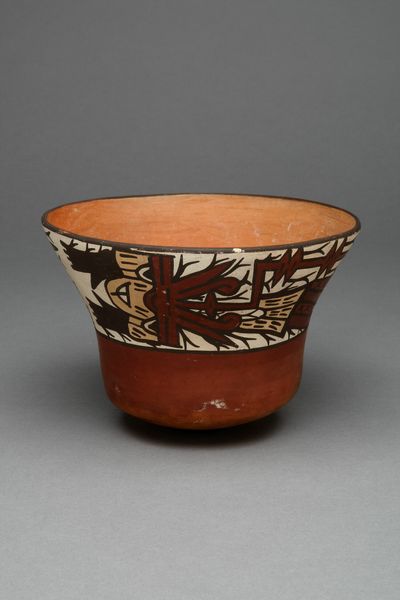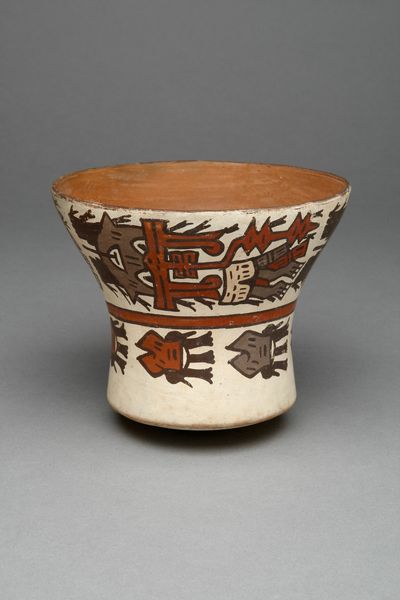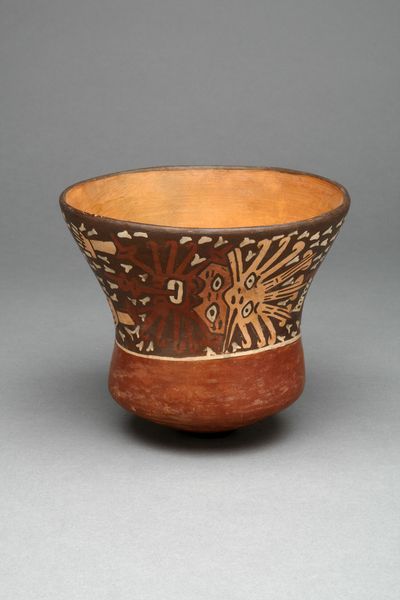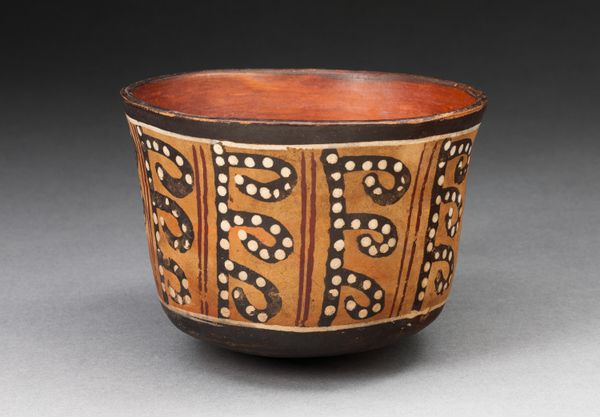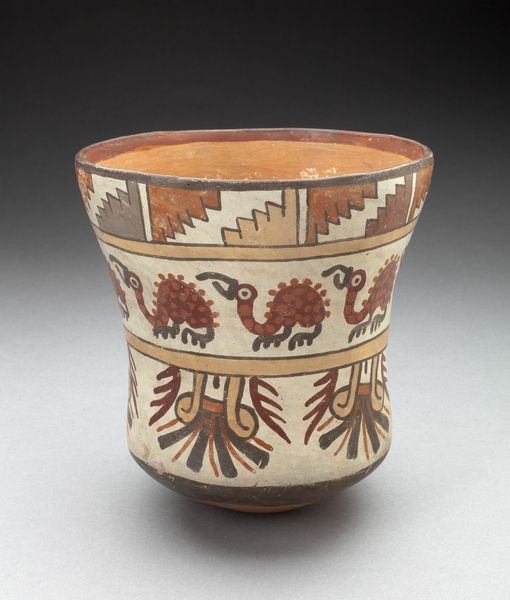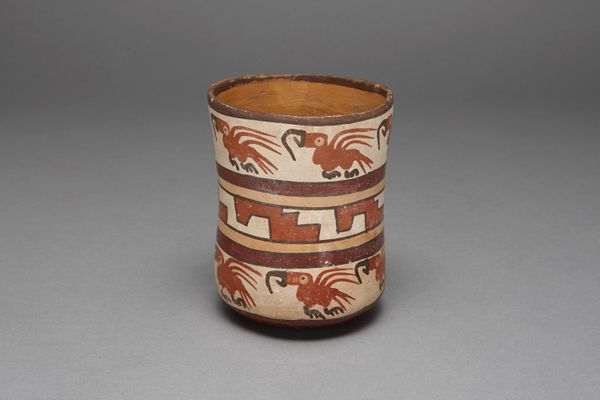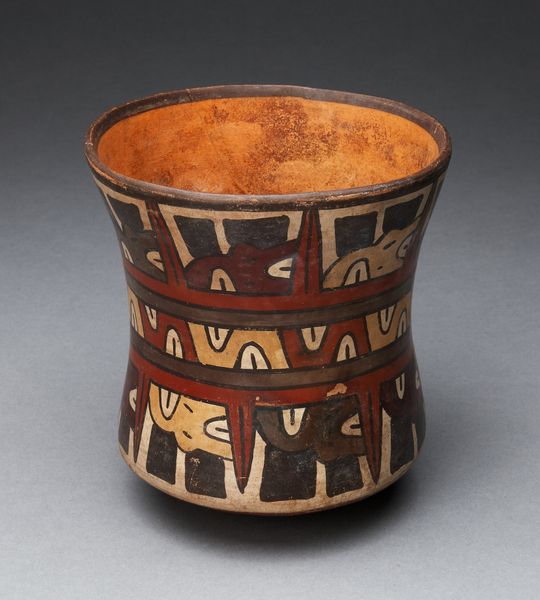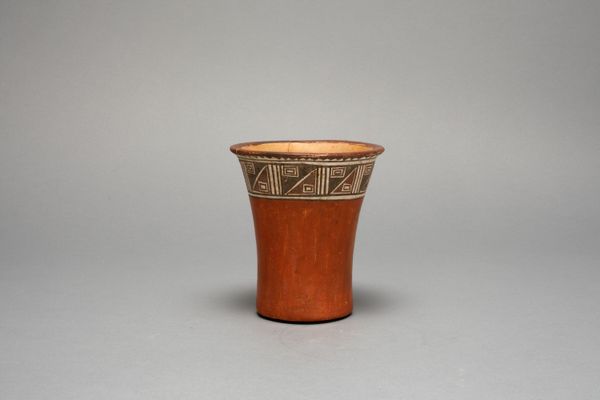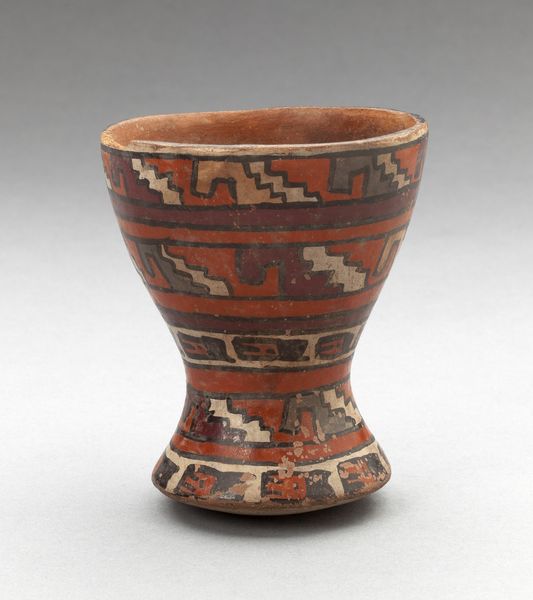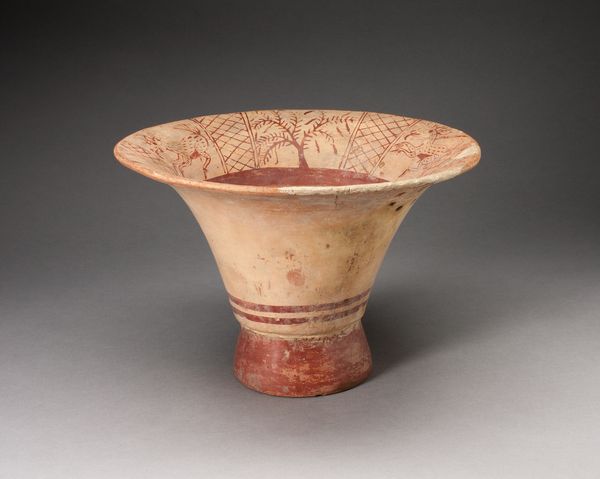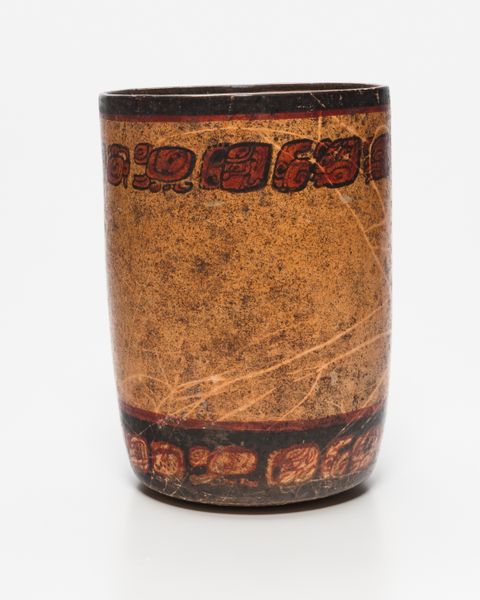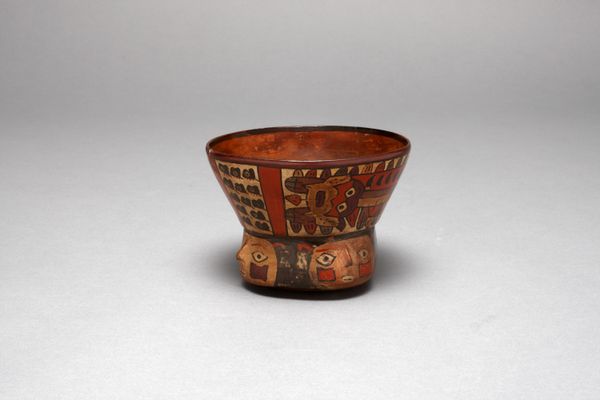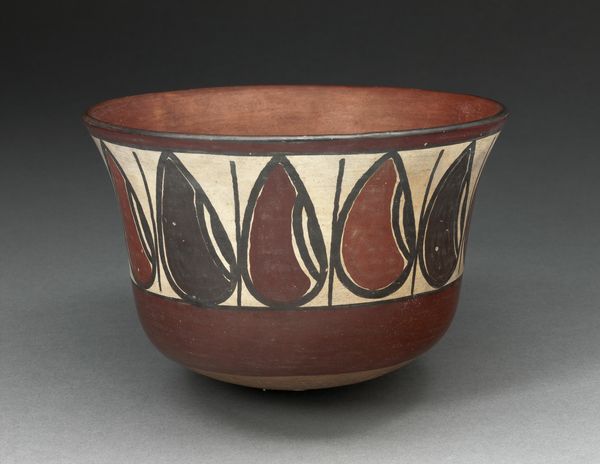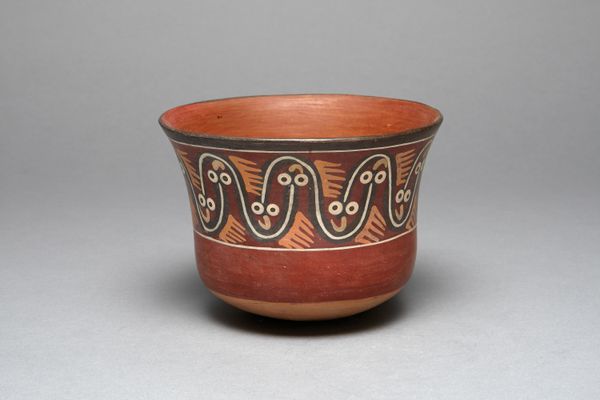
ceramic, earthenware
#
ceramic
#
earthenware
#
geometric
#
ceramic
#
decorative-art
#
indigenous-americas
Dimensions: 13 × 17.2 cm (5 1/2 × 6 3/4 in.)
Copyright: Public Domain
Editor: We’re looking at a ceramic cup from the Nazca culture, dating back to around 180 to 500 CE. It's covered in repeated flower-like motifs, and I find the symmetry quite striking. What visual elements stand out to you? Curator: Immediately, I am drawn to the geometry and repetition inherent in the design. Notice the way the artist has segmented the surface using horizontal bands. Within each band, we see either the floral motif encased in circles or a stepped, almost zig-zag pattern. How do these divisions contribute to the overall composition, in your view? Editor: It creates a structured, almost rhythmic feel. The shapes are contained, but also seem to play off each other, the angular patterns contrasting with the curves of the flower shapes. Do you think this interplay was intentional? Curator: Precisely. And if we analyze the use of color – the earthy tones, the contrasting dark and light shades – it serves to further articulate these divisions. The chromatic contrast establishes clear boundaries, while the repetitive element could also imply certain social structures within its cultural context. Note, for example, how the exterior decoration of the vessel contrasts with the monochrome surface of the inside. Do you believe this choice might hold some significance regarding the intended use of this particular object? Editor: Possibly, a distinction between the outside world and the vessel's contents. Thinking about how the artist manipulated form and color... it makes me appreciate the sophistication involved in what might initially seem like a simple design. Curator: Agreed. By focusing on these formal elements – color, shape, repetition, structure – we start to grasp the underlying visual language the artist was employing. These elements work together to create a cohesive and powerful statement, irrespective of its intended application. Editor: It’s amazing how much can be understood by examining just the visual characteristics. Thank you, that has changed how I view the artwork!
Comments
No comments
Be the first to comment and join the conversation on the ultimate creative platform.
